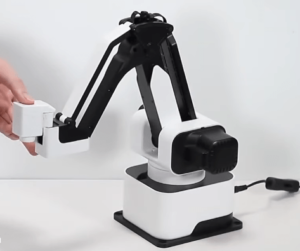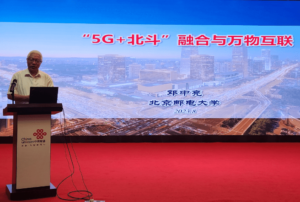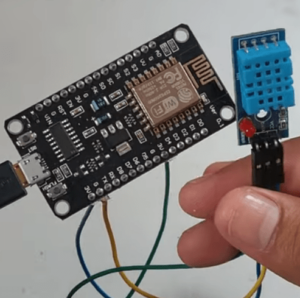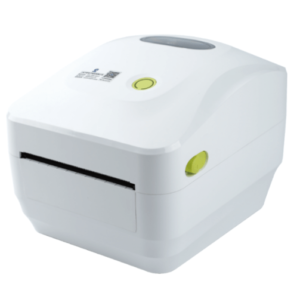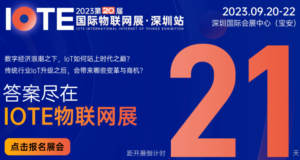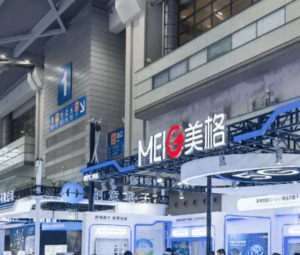Imelo: anwenqq2690502116@gmail.com
Kugwiritsa ntchito msika wa IoT ku China kukukwera pang'onopang'ono ndipo akuyembekezeka kukhala woyamba padziko lapansi 2027. IDC recently released the 2023 V1 edition of the IDC Worldwide Internet of Things Spending Guide.
Kugwiritsa ntchito msika wa IoT ku China kukukwera pang'onopang'ono ndipo akuyembekezeka kukhala woyamba padziko lapansi 2027
According to IDC, the total global IoT spending scale will be about $730 biliyoni mu 2022 and is expected to approach $1.2 trillion in 2027, with a five-year compound growth rate (CAGR) za 10.4%.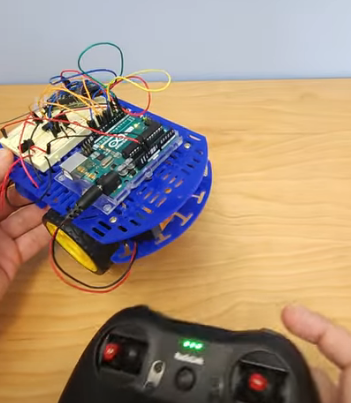
iot malingaliro a polojekiti - Radio-Controlled (RC) Arduino Robot
Focusing on the Chinese market, with the joint issuance of the Three-Year Action Plan for the Construction of New Infrastructure for the Internet of Things (2021-2023) by eight ministries and commissions, the development of the Internet of Things technology industry has received strong support from the government. IDC predicts that China's IoT spending will approach US$300 billion in 2027, ranking first in the world and accounting for about 1/4 of the total global IoT investment. Kuphatikiza apo, China's IoT IT spending grew steadily at a five-year CAGR of 13.2%, exceeding the global average.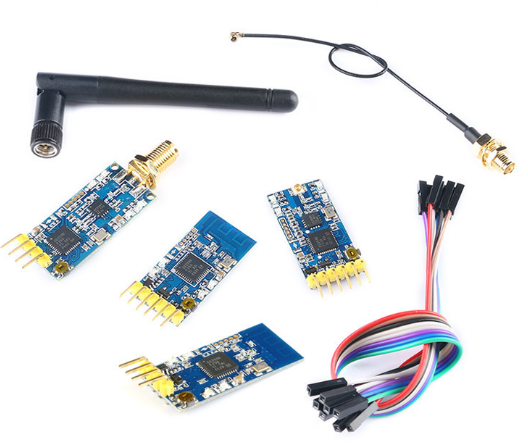
Wireless serial port module ZigBee wireless transparent transmission 2.4G data transmission and receiving development-free - IoT mtambo nsanja
Analysis report on the market status and future investment prospects of China's Internet of Things industry from 2023 ku 2028
1. Development overview and trend of global Internet of Things industry
The "Internet of Things White Paper (2018)" defines the Internet of Things as: the Internet of Things is the extended application and network extension of communication networks and the Internet, which uses perception technology and intelligent devices to perceive and identify the physical world, conduct calculation, processing and knowledge mining through network transmission interconnection, realize the interaction and seamless connection between people and things, things and things, and achieve real-time control, precise management and scientific decision-making of the physical world.![]()
Bluetooth Location Gateway - Base Station iBeacon Indoor Location Beacon Information Collector - China IoT Smart Gateway
The Internet of Things is a new generation of information technology highly integrated and comprehensive application, which is of great significance to a new round of industrial transformation and green, intelligent and sustainable development of economy and society. Since the "Smart Earth" was proposed, the concept of the Internet of Things has been rapidly recognized around the world and has become the core driving force for a new round of scientific and technological revolution and industrial transformation. The IoT hierarchy is shown in the following figure:
The Internet of Things is the third wave of the development of the world's information industry after computers and the Internet. Pakadali pano, the technology, miyezo, industries, applications and services related to the global Internet of Things are in a stage of rapid development, the core technology of the Internet of Things continues to develop, the standard system is being built, and the industrial system is in the stage of continuous improvement.
Kugwiritsa ntchito msika wa IoT ku China kukukwera pang'onopang'ono ndipo akuyembekezeka kukhala woyamba padziko lapansi 2027
According to IDC, global IoT spending will reach $754.28 biliyoni mu 2021 and is expected to reach $1.2 trillion by 2025, growing at a CAGR of 11.4% kuchokera 2021 ku 2025. According to IoTAnalytics forecasts, the number of IoT connections is expected to grow by 18% ku 14.4 billion active connections in 2022, with approximately 27 billion connected IoT devices expected by 2025.
Technical dimension
Hardware is the largest technology market for the Internet of Things, accounting for nearly half of the total investment in IoT IT. Focusing on the hardware market, as more and more enterprises carry out IoT projects, the IoT server (Server) market will usher in rapid growth, with a five-year growth rate of more than 20%. In addition to hardware, services are also a technology market with a large proportion of the Internet of Things, accounting for nearly 40% of the total investment in IoT IT.
Kuphatikiza apo, as the IoT market continues to expand, IoT devices continue to generate a staggering amount of data, and this massive amount of data contains huge untapped value. As a result, Analytics Software, a software sub-market related to IoT data analysis, will have a good market outlook, with a five-year growth rate of more than 25%.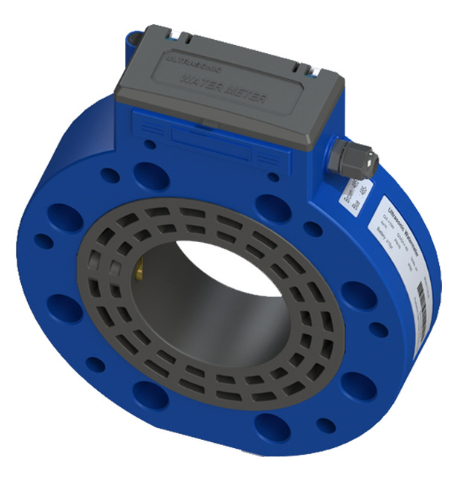
Card clamp type ultrasonic water meter - Irrigation water meter - Wireless IoT water meter - Flow sensor
Kuphatikiza apo, in terms of connection technology, the Chinese government has vigorously promoted "5G + Intaneti ya Zinthu" to enrich the supply of communication technology and expand the application scenarios of the Internet of Things. Mwa iwo, the coverage of low-power wide area networks (LPWANs) is expanding to a wider range of regions and applications to reduce the cost of Zida za IoT. IDC expects low-power wide-area networks (LPWANs) to grow at a five-year rate of more than 15 percent.
Industries and application scenarios
From an industry perspective, kupanga, government, utilities, professional services, and retail are the main end-users of IoT spending in China during the five-year forecast period, with their combined users accounting for nearly seventy percent of China's IoT spending. Mwa iwo, discrete manufacturing and process manufacturing account for more than one-third of China's IoT spending. Manufacturing-related application scenarios: Production Asset Management will be the largest investment direction in the IoT market in the next few years.
Kuphatikiza apo, due to the huge impact of the pandemic on various industries, the digital transformation of supply chains in the resource, ritelo, transportation and manufacturing industries has become particularly important in order to better produce, store and deliver products. In order to reflect this important trend, several application scenarios of IDC's "IDC Worldwide Digital Transformation Spending Guide" are referenced in this IoT spending guide, and a number of supply chain-related application scenarios such as Supply Chain Resilience and Smart Inventory are updated Intelligence) and Smart Warehousing. These new application scenarios will help customers better understand market dynamics and reflect the application trend of digital transformation technology in the IoT market.
2. Development overview and trend of China's Internet of Things industry
Mu 2009, China proposed "Sensing China", marking the first year of the industrialization of China's Internet of Things. Kuyambira pamenepo, the Internet of Things has been listed as a national strategic emerging industry, and a number of special funds, plans and standards have been issued at the national level to promote the development of the Internet of Things industry.
After more than ten years of promotion, the sensor technology and platform technology that support the development of the Internet of Things have gradually matured, the cost of applying the Internet of Things has rapidly declined, and the momentum of commercialization of the Internet of Things has appeared in various industries, and the development of the industry has gradually shifted from government-led to enterprise-led. Pakadali pano, platform-based technology giants have preliminarily completed their business layout in the field of IoT, and the IoT applications for scenarios have entered the proof-of-concept stage.
According to data from the "Internet of Things White Paper (2020)" of the Chinese Academy of Information and Communications Technology, ngati wa 2020, the scale of China's Internet of Things industry exceeded 1.7 trilioni yuan, and the overall industrial scale of the Internet of Things during the "Thirteenth Five-Year Plan" period maintained an average annual growth rate of 20%, in terms of the number of connections, the number of Internet of Things connections in China in 2019 was 3.63 biliyoni, and it is expected that by 2025, the number of Internet of Things connections in China will reach 8.01 biliyoni, with an average annual compound growth rate of 14.1%. According to IDC's forecast, China's IoT market will maintain a compound growth rate of 13.2% kuchokera 2022 ku 2026, exceeding the global market growth rate, and it is expected that by 2026, China will account for 25.7% of the global IoT market, continuing to maintain the world's largest IoT market.
3. Development overview and trend of important Internet of Things application fields
(1) Overview and prospect of the smart energy market
Smart energy mainly includes electricity, water and gas, and the main application is smart metering. Pakadali pano, the intelligence level of China's four major meters is quite different, according to the penetration rate of smart meters, smart gas meters, smart water meters and smart heat meters.
The demand for electricity consists of remote meter reading, distribution network, distributed photovoltaic power generation, and overseas electricity demand. Mu 2019, State Grid officially put forward the strategic goal of building "three types and two networks", planning to build a strong smart grid and ubiquitous power Internet of Things. Mu 2021, State Grid and China Southern Power Grid proposed that the total planned investment during the "14th Five-Year Plan" period is expected to be nearly 3 trilioni yuan, which is higher than the total investment of 2.57 trillion yuan in the national power grid during the "13th Five-Year Plan" period, and the investment focus has shifted to the distribution network side, providing a solid guarantee for the intelligent and digital construction of the distribution network side.
Mu October 2021, the State Council issued the "Action Plan for Peaking Carbon Emissions before 2030", with the continuous promotion of the Action Plan for Peaking Carbon Emissions, the average annual installed capacity of China's photovoltaics is expected to continue to rise in the future, and distributed photovoltaic power generation as a green and environmentally friendly power generation method faces broad development prospects. Mu 2021, China's new grid-connected installed capacity of photovoltaic power generation will be about 53GW, of which distributed photovoltaics will add about 29GW, accounting for about 55% of all new photovoltaic power generation installed capacity. According to the forecast of the China Photovoltaic Industry Association, during the "14th Five-Year Plan" period, the average annual installed capacity of photovoltaic will reach 70-90GW, due to the construction of photovoltaic power stations requires sufficient light, climate stability and other conditions, often there are high maintenance inspection costs, difficult work and other problems, and the application of Internet of Things wireless communication products effectively improves the operational efficiency of the photovoltaic power generation industry, can adapt to the rapid development of the downstream market and expand market share.
According to Northeast Group's forecast, Southeast Asian countries will invest $13.6 billion to develop smart grid infrastructure from 2014 ku 2024, za zomwe $8.8 billion will be used for a large number of smart meters to deploy, and the rest will be used for distribution system automation and other smart grid investments. There is a huge market space for smart grid facility providers.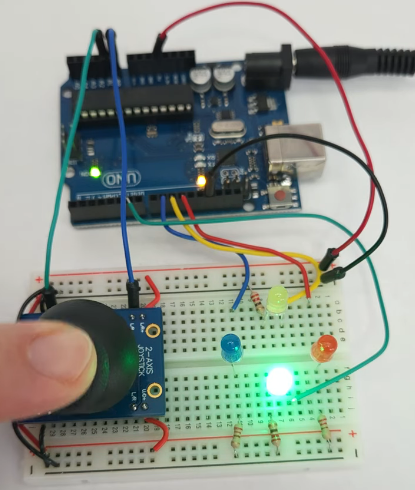
2023 iot malingaliro a polojekiti - Arduino LED Control yokhala ndi Analogi Joystick
Smart gas meters are mainly used for data collection and control of natural gas usage. With the increase in the proportion of natural gas in the energy consumption structure and the increase in the demand for stock replacement of gas mechanical meters, the demand for smart gas meters has room for significant improvement. According to data from Fortune Business Insights, the market size of the global smart gas meter industry has shown an upward trend year by year, and in 2020, the market size of the global smart gas meter industry reached about 7.62 mabiliyoni aku US, kuwonjezeka kwa 35.35% chatha 2015.
From 2021 ku 2026, the global smart gas meter industry market size will rise to about $10.9 billion at a compound annual growth rate of 6.3%. The new generation of IoT products represented by NB-IoT smart gas meters can effectively extend the use time of gas meters, realize remote meter reading and monitoring, and will become an important part of the downstream application field of Internet of Things wireless communication products under the trend of comprehensive promotion.
In the field of household water meters, the penetration rate of intelligence is also expected to increase rapidly, according to the principle of "one household, one meter", mu 2022, the number of domestic household water meters has exceeded 400 miliyoni. The penetration rate of smart water meters is still at a low level, and there is a huge replacement demand in the market. The wireless remote telemetry smart water meter using NB-IoT technology can effectively solve the problems of difficult hand-reading meter entry, high human error rate and low efficiency. Since 2018, operators and water utilities have been actively tendering for the procurement of NB-IoT smart water meters. As a cellular communication technology specifically for the Internet of Things, NB-IoT has entered the accelerated construction phase.
(2) Overview and market prospect of the Internet of Vehicles
The Internet of Vehicles is based on the intranet, inter-vehicle network and on-board mobile Internet, according to the agreed communication protocol and data interaction standards, between the vehicle-X (X: car, road, pedestrian and Internet, ndi zina.), wireless communication and information exchange of the large system network, is an integrated network that can realize intelligent traffic management, intelligent dynamic information service and intelligent vehicle control. The Internet of Vehicles is one of the most valuable segments of the Internet of Things.![]()
Bluetooth positioning gateway, base station, iBeacon indoor positioning beacon, information collector, IoT smart gateway
Pakadali pano, the Internet of Vehicles is mainly used in the automotive and two-wheeled electric vehicle market, of which automotive products include two categories: on-board front-loading and on-board rear-loading; Two-wheeled electric vehicle products include two-wheeled electric vehicle sharing leasing, two-wheeled electric vehicle battery swapping and two-wheeled electric vehicle front-mounted central control.
According to the forecast of CIC Industry Research Institute, the average annual compound growth rate of China's Internet of Vehicles market from 2021 ku 2025 will be about 20.07%, and it will reach 89.8 madola mabiliyoni aku US 2025; The compound annual growth rate of China's Internet of Vehicles users is about 30.04%, and it will reach 273 million units in 2025.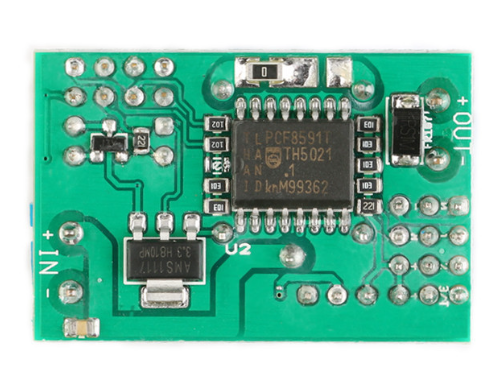
IoT switch module China manufacturer
With the rapid maturity of China's 5G network, the application of 5G+C-V2X in the new generation of intelligent networked vehicles has accelerated, and the communication demand of intelligent networked vehicles in autonomous driving and vehicle-road coordination has continued to grow, and the future market space is huge. According to a report by Foresight, the global V2X market is expected to exceed $165 biliyoni mu 2022. Mwa iwo, China's 5G technology is at the forefront of the world, and in the 5G era, China's Internet of Vehicles development is expected to achieve curve overtaking.
Mzaka zaposachedwa, the state has introduced a series of policies to support the development of the Internet of Vehicles industry, and the size of China's V2X market is expected to reach 50 billion US dollars by 2022. China occupies a leading position in 5G development, and the assembly rate of China's 5G automotive wireless communication modules is slightly higher than the global level, while the assembly rate of 5G automotive wireless communication modules for Chinese commercial vehicles is higher than that of China's passenger car 5G automotive wireless communication modules. According to Zosi Industry & Research, mu 2025, there will be 10 million vehicles equipped with 5G wireless communication modules in China, with an assembly rate of about 35%, and the market for vehicle wireless communication modules is broad.
(3) Commercial retail overview and market prospects
The development of China's retail industry has gone through three stages, and before the 90s, department stores were dominant; After the 90s, the retail industry developed to diversification, with department stores, masitolo akuluakulu, convenience stores, shopping malls, chain stores, ndi zina. coexisting; In the 21st century, e-commerce and smart retail have risen one after another. Smart retail is the use of the Internet, Intaneti ya Zinthu, big data and artificial intelligence and other technologies to build the digitalization of retail elements such as goods, users, and payments, and the intelligence of retail operations such as procurement, malonda, and services, so as to provide users with goods and services with higher efficiency and better experience.
The main applications of IoT in commercial retail scenarios include mobile payment, shared leasing, and self-service devices.
Mobile payment is currently the most mature commercial retail application scenario, mobile payment terminal is an important part of O2O closed loop, can open up online and offline for merchants, to achieve traffic interconnection, kuphatikizapo: wireless POS machine (including 4G smart POS, 2G and 4G traditional POS, MPOS, EPOS, ndi zina.), scan code payment terminals (including 2G and 4G code scanning guns, payment boxes, ndi zina.), cashier terminals, face recognition payment terminals, ndi zina. The company's wireless communication intelligent module can support mobile payment terminal networking, data processing, intelligent operating system and other application requirements.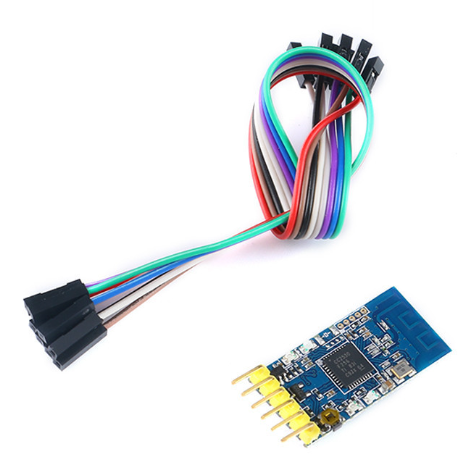
IoT wireless serial port module ZigBee wireless transparent transmission
The development of mobile payment terminals is closely related to the development of the entire third-party mobile payment market, according to iResearch's statistics, the scale of China's third-party mobile payment comprehensive payment transactions reached 449 trillion yuan in 2021, kuwonjezeka kwa chaka ndi chaka 20.3%. Mtsogolomu, with the huge number of users and increasing offline payment scenarios, the number of users and stickiness will further grow, and it is expected that by 2026, the scale of third-party comprehensive payment transactions in China will reach 87.750 biliyoni yuan, with a compound growth rate of 15.85% in the past five years.
Taking POS as an example, according to the "Overall Operation of the Payment System in 2022" released by People's Bank of China, the total number of POS machines in the country will reach 35.56 million units by 2022, with a compound growth rate of 6.54% kuchokera 2015 ku 2022. Compared with traditional networked POS, smart POS is equipped with an intelligent operating system, and in terms of services, smart POS extends from two perspectives: horizontal and vertical around payment. Vertical extension connects the upper and lower links of the merchant's business process, and provides one-stop operation optimization services including membership management, customer marketing, kusanthula deta, ndi zina.; Horizontal extension is to tap other needs of merchants, such as financial value-added services. With the rapid increase in penetration, smart POS is expected to shift from quantitative to qualitative change, ushering in the outbreak of the ecosystem.
2) Shared rental market
Malinga ndi "Report on the Development of China's Sharing Economy (2023)" released by the State Information Center, the transaction scale of China's sharing economy in 2022 will be 3,832 biliyoni yuan, kuwonjezeka kwa 3.9% over the previous year. From the perspective of market structure, the sharing economy transaction scale in the three fields of life services, production capacity and knowledge and skills ranked in the top three, with MOP1,854.8 billion, MOP1,254.8 billion and MOP480.6 billion respectively. From the perspective of development speed, the three fields of knowledge and skills, shared medical care and production capacity have grown rapidly, with compound annual growth rates of 28.31%, 23.21% ndi 24.65% since 2017, motsatana.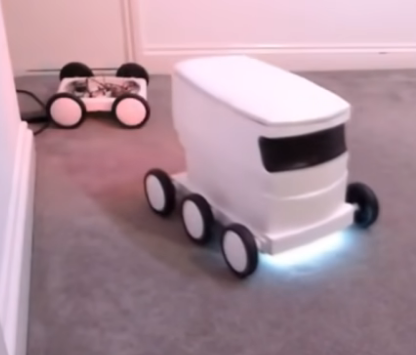
Excellent IoT projects in 2023
Affected by multiple complex factors, the growth of sharing economy in the fields of transportation, shared accommodation, and life services in 2020-2022 is slightly slow, and with the continuous introduction of relevant support at this stage, the market in the downstream application fields of the sharing economy is gradually recovering, and related industries are expected to usher in a new round of growth.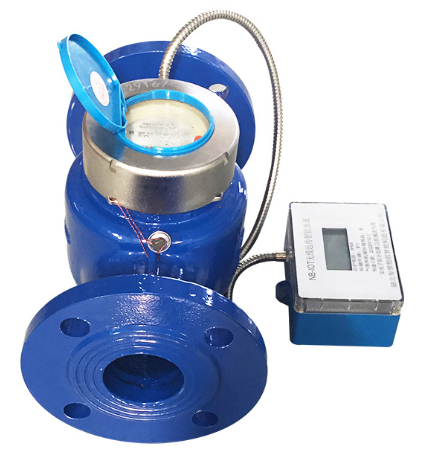
Large diameter water meter intelligent remote transmission photoelectric direct reading - Detachable IoT water meter - Remote water meter management software
The main applications of IoT in the field of sharing economy include sharing washing machines, sharing air conditioners, sharing charging treasures, sharing bicycles, sharing water purifiers, sharing massage chairs and other shared rental equipment. The company provides public network (2G, 4G, NB-IoT) communication solutions for such devices to help the intelligent transformation of traditional equipment.
3) Self-service equipment
With the trend of de-laborization becoming more and more obvious, self-service equipment has been upgraded from traditional to intelligent, improving the efficiency of merchants and consumers. Such as self-service vending machines, self-service charging piles, self-service social security machines, self-service ATMs, self-service ticket vending machines, ndi zina. The company provides public network (2G/4G/NB-IoT) solutions for such devices to realize the intelligent transformation of traditional equipment. 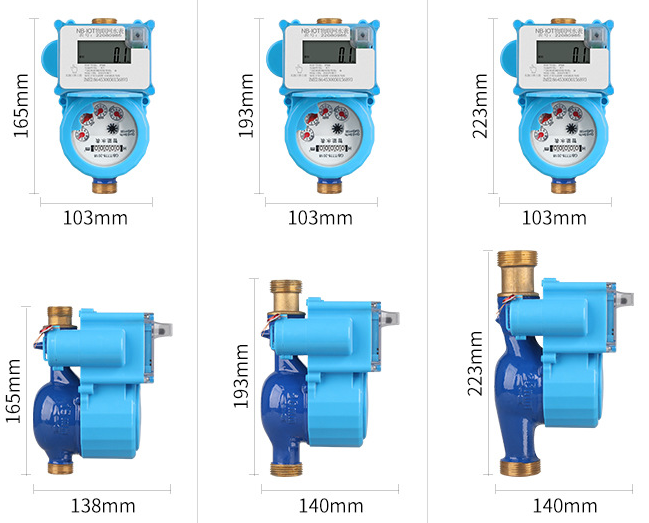
Remote NB-IOT Internet of Things prepaid water meter, wireless remote meter reading, intelligent valve control
Mu August 2017, the Self-service Vending Industry Branch of China General Merchandise Commerce Association was approved to release the first industry specification for self-service vending machines in China, "China Vending Machine Operation Business Guidance Code (Trial)", which regulates business qualifications, equipment listing requirements, operation management, food safety control and other aspects. This will contribute to the massive growth of the sales department; Mu October 2020, the State Council issued the "New Energy Vehicle Industry Development Plan (2021-2035)", which plans that by 2025, domestic new energy vehicle sales will reach about 20% of the total sales of new vehicles, and the convenience of charging services will be significantly improved.
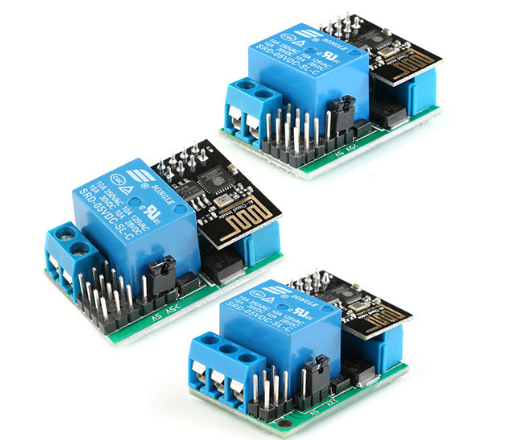
Cross-array M1 - M2 4 - E1 WiFi IoT switch module Voice control - secondary development - nyumba yanzeru
Mtsogolomu, with the penetration of self-service devices in various fields, the Internet of Things will create a large number of business opportunities in the field of self-service devices.
(4) Overview and market prospect of industrial Internet of Things
Industrial Internet of Things is the subdivision of the Internet of Things in the industrial field, kuti, the collection of intelligent industrial products, processes and services that can communicate with each other through the network, and further improve the informatization, automation and intelligence of the industry. Ubiquitous connection is the premise of the industrial Internet of Things, industrial resources are connected to each other or connected to the Internet through wired or wireless means, forming an efficient and convenient industrial Internet of Things information channel, realizing the interconnection of industrial resource data, expanding the breadth and depth of the connection between machines and machines, machines and people, machines and the environment.
Industrial monitoring is one of the important applications of industrial Internet of Things, through sensors and wireless communication networks for online monitoring and real-time monitoring of equipment, can effectively carry out machine operation monitoring, fault diagnosis, prediction, quickly and accurately locate the cause of failure, improve maintenance efficiency, reduce maintenance costs. Driven by the development of wireless communication technology, more and more industrial equipment has given rise to the need for devices to connect to wireless communication networks in order to improve management efficiency.
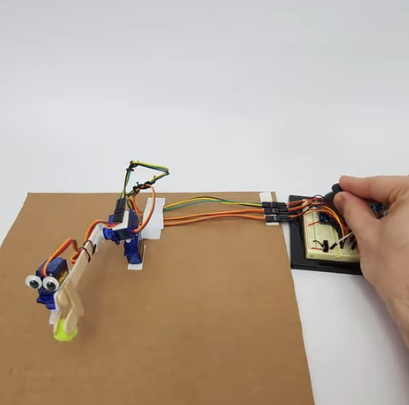
iot malingaliro a polojekiti 2023 - Popsicle Stick Robotic Arm with Arduino
According to the forecast report released by the research report network, mu 2020, the global industrial Internet of Things industry market size reached 81.339 mabiliyoni aku US, and is expected to reach 303.859 madola mabiliyoni aku US 2027, with a compound annual growth rate of 20.74%, the era of industrial Internet of Things based on wireless communication technology is developing rapidly, a wide range of devices based on embedded technology to achieve seamless connection, with the popularity of Internet of Things technology, the market scale will be further improved.
(5) Smart city (urban IoT sensing)
Smart city is an important part of the Internet of Things, according to the "Internet of Things White Paper" released by the China Academy of Information and Communications Technology, new concepts and technologies are driving the global smart city Internet of Things application to heat up in an all-round way. "Digital twin city" is becoming a hot spot for the construction of global smart cities, through the massive Internet of Things sensing terminals of transportation, mphamvu, chitetezo, environmental protection and other systems, it can comprehensively express the operation status of real cities in real time, build virtual mirrors of real cities, support various applications such as monitoring, prediction and what-if analysis, and realize intelligent management and regulation. 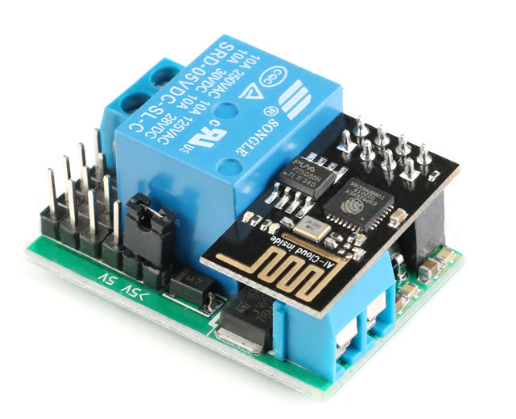
WiFi IoT switch module China manufacturer
Pakadali pano, Singapore and France have launched "digital twin cities" pilots. China's Xiong'an New Area actively plays a leading role, using digital twins to realize the synchronous planning and construction of digital cities and real cities, so as to realize information visibility, trajectory can be followed, status can be checked, virtual and real synchronous operation, scenario integration, the past can be traced, and the future can be expected.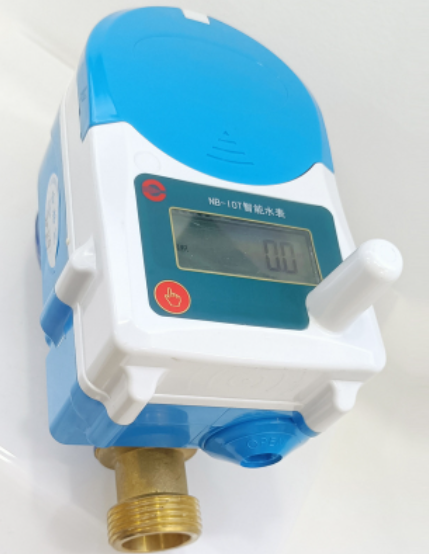
NB-IOT smart IoT wireless remote water meter
According to the forecast of Yiou Think Tank, it is optimistic that China's smart city investment scale will reach 20.16 trillion yuan in 2021 ndi 2.278 biliyoni ya yuan 2023, with a compound growth rate of 9.6% during the period. Nthawi yomweyo, based on the application of wireless communication products of the Internet of Things in smart cities, the application of wireless communication products in smart cities continues to extend, the ability of platform-based management and control continues to improve, and the role provided in the fields of general health, government services, urban governance and other fields is more significant, showing a positive industrial integration trend, and downstream market demand is expected to further increase.



